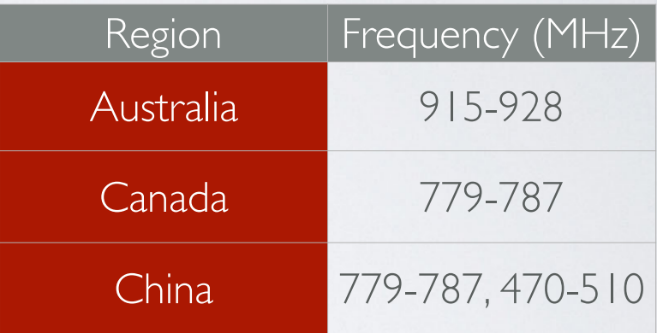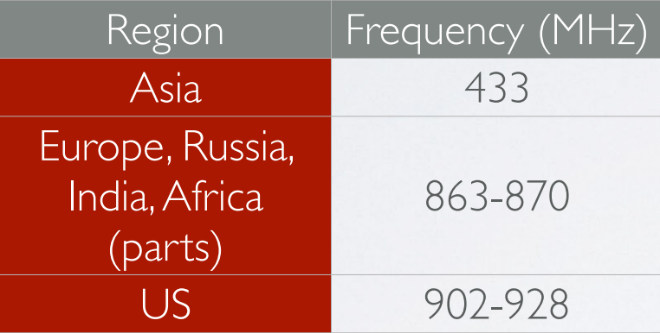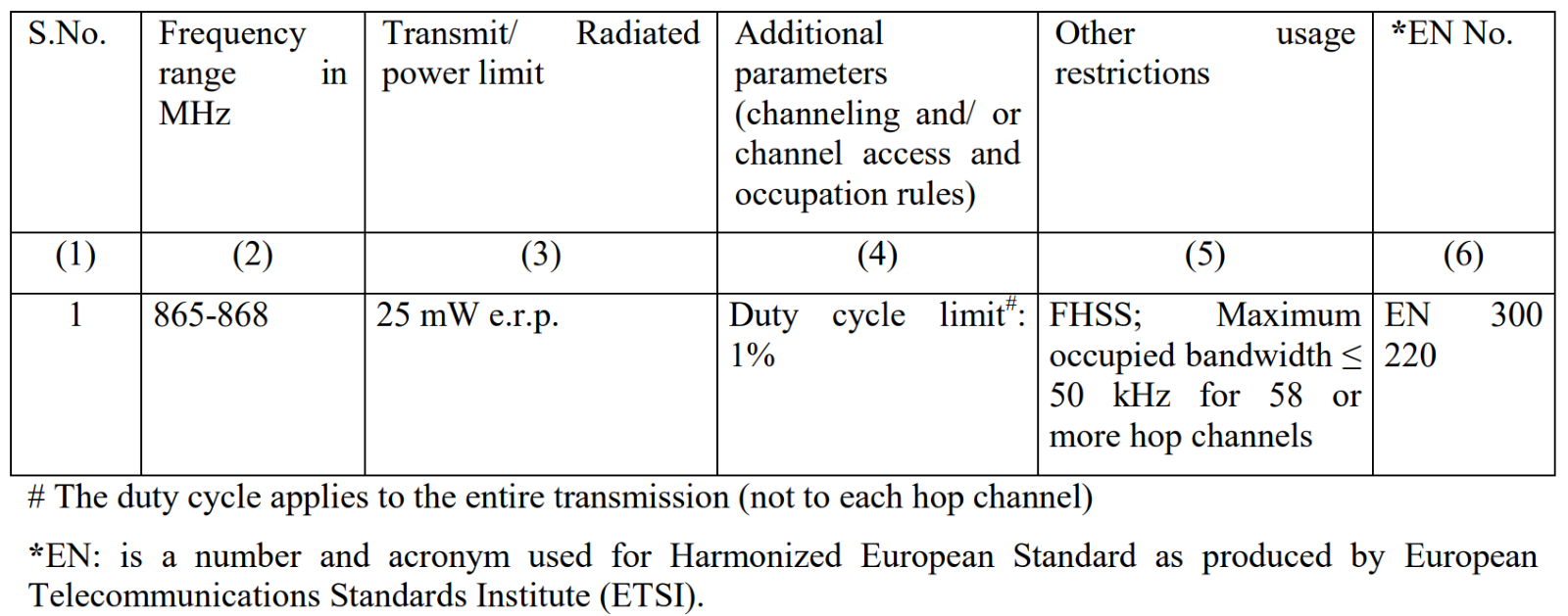ISM Band
- LoRa operates in the unlicensed ISM (Industrial, Scientific and Medical) radio band that is available worldwide.


- In India, LoRaWAN operates in the 865-868 MHz frequency band.
- Devices such as microwave ovens, medical equipments or baby monitors all uses the ISM band
- ISM band advantages:
- Anyone can use these frequencies.
- No license fee is required.
- ISM band disadvantages:
- Low data rate.
- Lots of interference because anyone can use these frequencies
- Because the ISM band can be used by everyone, there must be some rules set otherwise this band will become unusable. Think of the many signals’ interferences.
- In Europe the European Telecommunications Standards Institute (ETSI) creates standards which are used by local (= country) regulatory authorities. https://www.etsi.org/
- In the US the Federal Communications Commission (FCC) creates these standards. https://www.fcc.gov/
- In India the Ministry of communications has a notification based on standards set by ETSI
- For example in Europe when using the ISM band frequencies (863 MHz – 870 MHz) users must comply to the following rules:
- For uplink, the maximum transmission power is limited to 25mW (14 dBm).
- For downlink (for 869.525MHz), the maximum transmission power is limited to 0.5W (27 dBm)
- There is an 0.1% and 1.0% duty cycle per day depending on the channel.
- Besides these ISM band rules, the network operator (for example The Things Network) can also add additional restrictions.
THE THINGS NETWORK (TTN) FAIR USE
- If you use The Things Network (free public community LoRaWAN network), the following fair use policy applies:
- The uplink airtime is limited to 30 seconds per day (24 hours) per node.
- The downlink messages are limited to 10 messages per day (24 hours) per node
Airtime calculator for LoRaWAN (avbentem.github.io)
Time On Air
Time on Air (ToA) is the amount of time that the transmitter antenna is energised and transmitting data. Note: ToA is not the time from Tx to Rx
 Duty Cycle
Duty Cycle
Duty cycle
is the proportion of time during which a component, device, or system is operated. The duty cycle can be expressed as a ratio or as a percentage
As mentioned previously in Europe there is a 0.1% and 1.0% duty cycle per day depending on the channel
For example: Time on Air = 530 ms Duty cycle = 1%

For example: Time on Air = 400 ms Duty cycle = 0.1%

